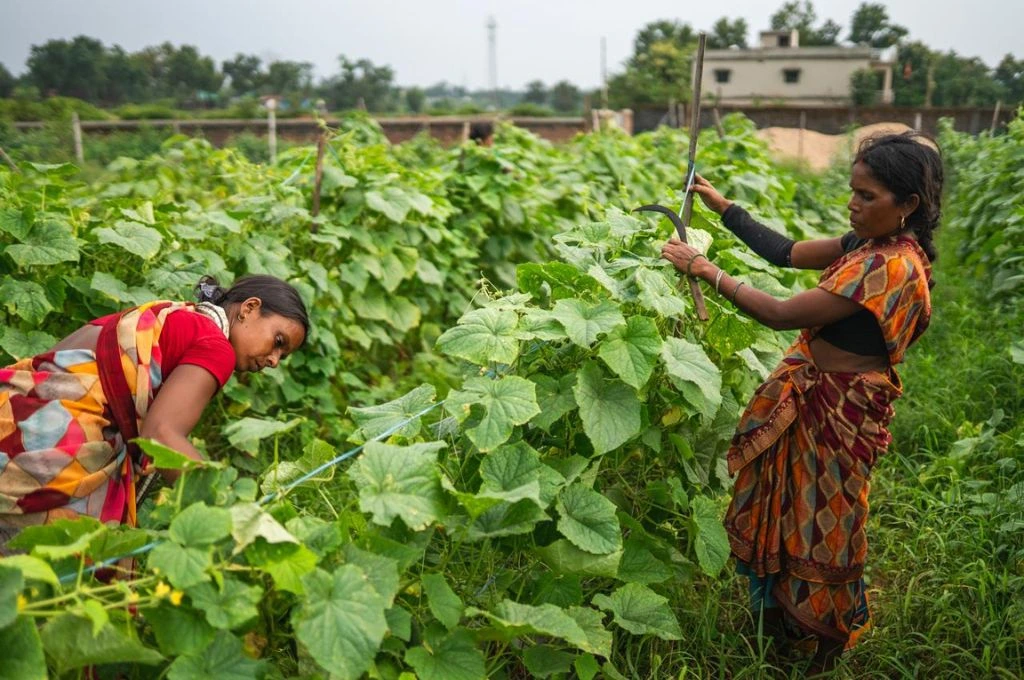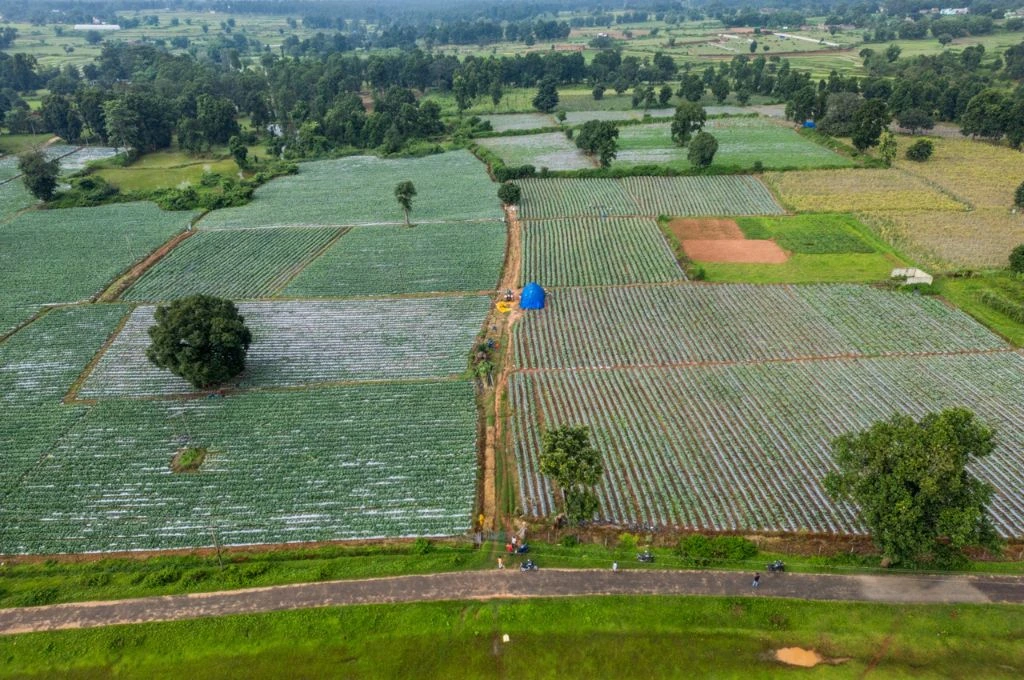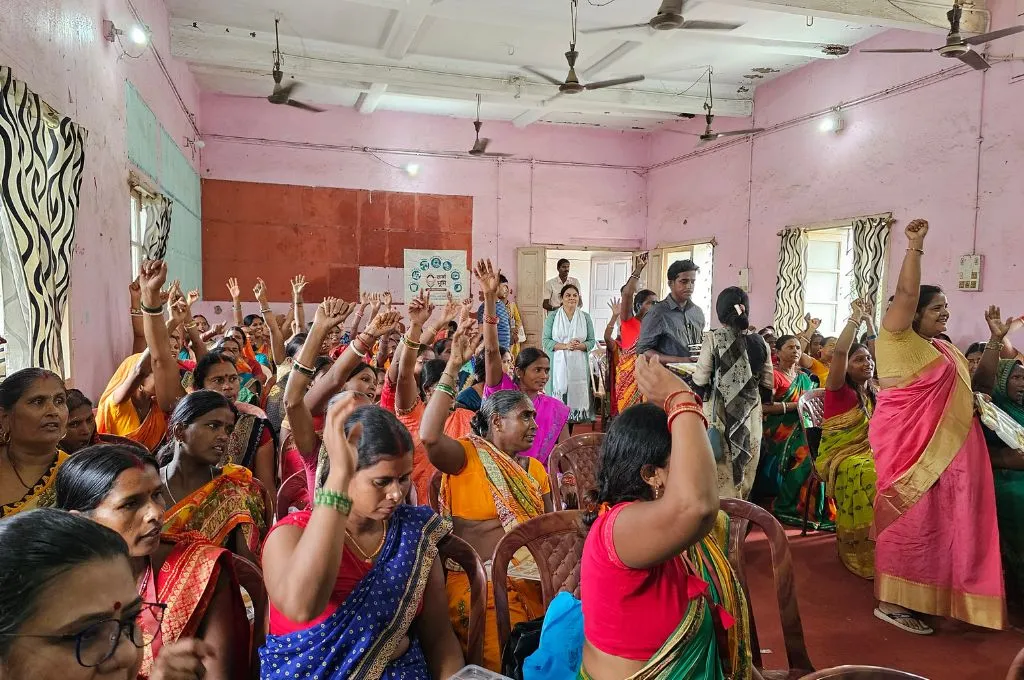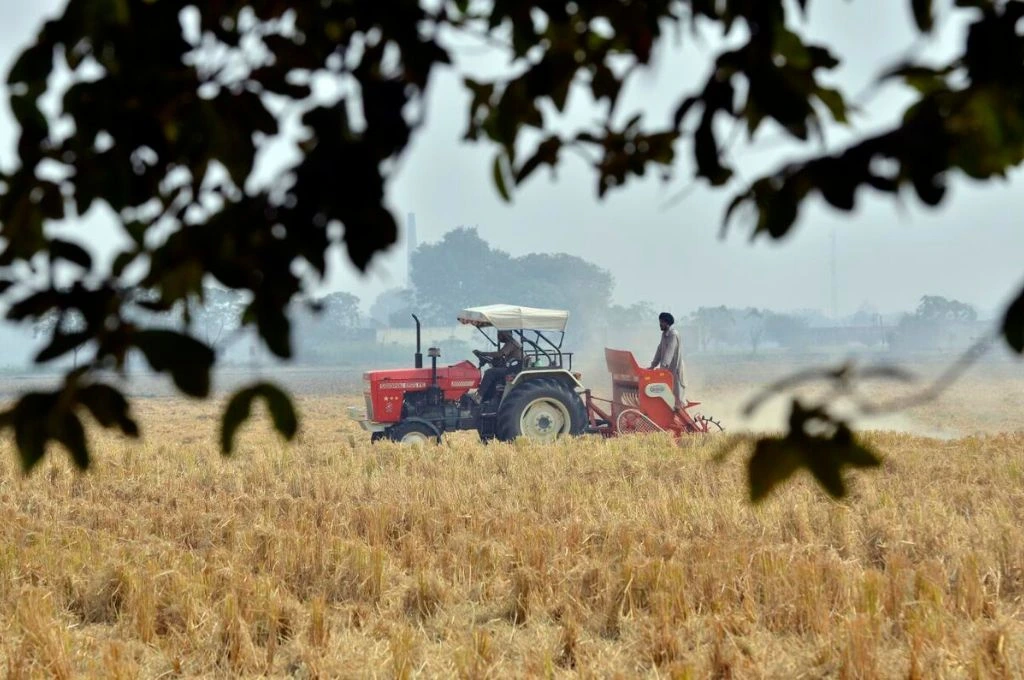Smallholder and marginal farmers, especially in India’s central Adivasi belt, are facing new patterns of stress due to increasing landlessness, shrinking plots, and fragmented holdings. This is set against the backdrop of climate change and a growing proportion of women in agriculture, as men migrate in search of better-paying, non-farm employment. Large, registered farmer producer organisations (FPOs) can help farmers with market linkages, while self-help groups (SHGs) can aid access to credit. However, households with small landholdings in remote areas are unable to make the most of these options unless they can increase the yield from their individual plot. As a result, higher productivity at the household level remains sporadic and unfeasible.
At Collectives for Integrated Livelihood Initiatives (CInI), we have been working on agriculture and livelihood in the Adivasi areas of Jharkhand since 2007. Our experience shows that by cultivating together in small local groups, farmers can create economies of scale, make better use of FPOs, and share risk. Voluntary models of group farming—with as few as six to 10 members in one collective—could help many families make their first transition from subsistence farming to profitability.
According to the Agriculture Census 2015–16, small and marginal farmers—those who own less than 2 hectares (approximately 5 acres) of land—account for more than 85 percent of the total number of farmers in India, but cultivate only 47.3 percent of total crop area. For agriculture to be financially sustainable for them, they need to increase their days of production from approximately 50 to at least 150–250 days in a year.

Here are some ways in which group farming can make agriculture more profitable for smallholders.
1. Pooling contiguous plots could make a parcel of land viable
In approximately 600 patches of land in Jharkhand, CInI has enabled women farmers and their households to form small, informal groups to work on their plots collectively. On 60 percent of these patches, farmers have moved from subsistence farming to livelihood-oriented agriculture.
This is because group farming is conducive to microplanning, which is location- and geography-specific and tailored to the unique needs, resources, and challenges of the area being cultivated. Group farmers can use technology, equipment, and labour more efficiently. Cultivating the same produce also makes it easier for members to market it in a cost-effective manner.
2. Water can be irrigated more sustainably
In Jharkhand, the terrain is hilly and undulating, and agriculture is primarily rain-fed. Climate change is adding to existing challenges with either excessive or insufficient rain at the time of cultivation.
Because of these factors, many farmers manage to grow only one annual crop. To produce two or more crops in a year—which is essential for profitability—they require perennial water resources and irrigation infrastructure. These are capital-intensive. For instance, constructing a water storage structure costs approximately INR 3 lakh. For irrigation, they need water-lifting devices such as pumps. Fuel is often unaffordable, more so because they need to travel some distance to buy it. While a solar power-based pump is climate-responsive and sustainable, setting up solar panels-based irrigation could cost INR 3.5 lakh for each standard unit of 3 HP. Drip irrigation costs another 1 lakh per acre. The overall cost thus becomes prohibitive for individual farmers, who sometimes own as little as one-third of an acre.


Irrigation could become affordable if six or more farmers pool their land and the investment is distributed among them. Each household can contribute to the fund in proportion to the size of their landholding. This also leads to better optimisation of the infrastructure. For instance, a solar pump can irrigate 3–3.5 acres and would stay underutilised if a single farmer used it on a smaller patch. By investing in it as a small group, farmers can increase their productivity in a climate-resilient way.
Farmers working on a pooled patch of land with the same water source can form informal water user groups. These groups identify or hire an operator for the infrastructure. They also combine their resources for pest control or protective net-house farming. With climate change resulting in an increase in pest and disease outbreaks, such interventions have become crucial to success. Other climate mitigation practices—such as crop rotation, solar energy-based insect traps, and bio mulch approaches—are also easier to adopt in groups.
3. A network can link small producer groups to technology hubs
A patch or parcel of farms cultivated by the same group can be connected to a larger hub across three or four villages. It may be challenging for one small group to use state-of-the-art technology, but coordination between multiple groups of farmers makes it less expensive. The hubs set up by CInI capture satellite data on weather and share it digitally with group farmers across a few villages. The hub also helps them rein in the expertise of agriculturists to improve and sustain the health of the soil. The hubs coordinate the crop and call for pest control services at the same time. Soluble fertilizer, used for drip or precision farming, becomes affordable for all of them if they consolidate their requirements.
4. Group farming could help marginal farmers be integrated into the FPO ecosystem
FPOs and farmer producer companies (FPCs), which are typically large, can purchase inputs in bulk and market outputs at scale. But it may not be practical for them to engage with individual marginal farmers. Smaller producer groups can coordinate requirements and production to achieve the volume that makes it worthwhile for FPOs to get involved.
A smaller network of group farmers can then combine their input needs and place a single order to an FPC. For instance, an insecticide or pesticide supplier can come to an area with a demand from a cluster of patches and carry out pest control on the same day. Coordinated cropping can also generate enough volume of a particular crop for an FPO to collect the produce from the farm gate. Transport costs are high and a big hurdle for small and marginal farmers. If they produce one crop together, say tomatoes, it is feasible to hire a small van—a ‘chhota haathi’—for collection. This could help farmers save up to 10 percent on transportation.
Group farming has its own challenges
Persuading farmers to produce in collectives takes time. While they have seen SHGs succeed, the idea of group farming is relatively new to most of Jharkhand. In some cases, they hesitate to join in because of historical mistrust. Some of them may not be up to the risk or may fear losing autonomy in groups where decisions are made by a majority vote. Exposure visits to villages with successful set-ups could help them overcome this reluctance.
Even after groups are established, they go through the usual stages of forming, storming, and norming before they sustain processes. Initial hurdles could shake the confidence of individuals. For instance, there may be conflict over service charges for the use of water or over profit-sharing. There may also be disagreements about which single crop to grow.

Additionally, group farmers lack access and exposure to technical know-how. Those adopting solar-powered technology face risks such as a solar pump malfunction or the shortage of trained operators. Agriculture is time-sensitive and if equipment doesn’t function within a certain window of time, farmers can’t grow a crop for that season. This is why block- or district-level technology hubs are crucial. Nonprofits play a crucial role in aiding the capacity of group farmers with technology and apps, efficient farming techniques, and financial literacy.
Their biggest challenge, however, is access to finance. For year-round production, each farming household needs an average of INR 10–15,000 in input cost, depending on landholding size, crop choices, and farming practices. Smallholders find it difficult to maintain this cash flow. As a small group it becomes easier. CInI’ s approach aligns group farmers with producer groups under NRLM guidelines, enabling them to use the revolving capital available under the scheme.
However, we need a stronger policy push for group farming. Most CSR funds and government policies support individual farmers. We need schemes, subsidies, loans, grants, and insurance instruments that specifically target group farming. This could help bring many households in the central Adivasi belt out of the poverty cycle.
Prasanna Kumar Modak contributed to this article.
—
Know more
- Learn about the migration patterns of labourers from Adivasi communities in Rajasthan.
- Read about a farmer in Jharkhand who is modernising agriculture.
- Learn about the one-acre model of farming.






